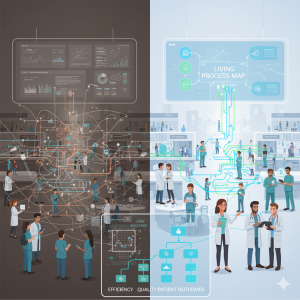Why Choosing the Right Company to Work For Is the Most Important Decision in Your Career
Most career advice focuses on the wrong things: salary, title, and company brand. They matter, of course, but they are not what define your experience at work.
What defines it is leadership, and more specifically, the relationship you have with your manager.
That relationship shapes how you feel on a Monday morning, how confident you are when you speak in meetings, how you respond under pressure, and how long you last. Long after the novelty of a new role wears off, leadership is what remains.
You Do Not Work for a Company, You Work for a Manager
We like to believe we work for organisations. In reality, we work for people.
Your manager determines how priorities land, how pressure is applied, and how mistakes are handled. They set the tone for what is acceptable, what is encouraged, and what is quietly punished.
A supportive manager builds you up. They notice effort as well as outcomes, encourage thinking rather than blind execution, and care about your development, not just delivery.
A delivery-only manager focuses on something else entirely. Deadlines, sign-offs, status updates, ticking the box and moving on. There is little interest in how the work is achieved, or what it costs the people doing it, as long as it gets done.
The Difference Between Sustainable Performance and Short-Term Output
Managers who focus solely on delivery often believe they are being efficient. They are not.
They extract output without building capability, meet milestones while draining motivation, and optimise for short-term results while ignoring long-term consequences.
Supportive leaders think differently. They understand that performance is not just about what gets delivered, but how consistently people can deliver without burning out. They ask different questions, not just “Is it done?”, but “Is this realistic?”, “Do you have what you need?”, and “What did we learn from this?”
That difference matters more than most people realise.
Your Manager Shapes Your Confidence More Than Any Training Programme
Confidence at work is rarely created in isolation. It grows through trust, feedback, and being given space to think.
A good manager challenges you without undermining you. They give feedback that sharpens rather than shrinks you, and they back you when things do not go to plan. Over time, this compounds. You speak up more, take on bigger responsibilities, and grow into leadership yourself.
Under a manager who only cares about delivery, confidence erodes quietly. People stop offering ideas, become cautious, and do exactly what is asked, nothing more. Not because they lack ability, but because the environment does not reward initiative.
Culture Is Experienced Through Your Manager, Not Company Values
Every organisation claims to have strong values. Few live them consistently.
Culture is not what is written on a website. It is how your manager behaves when pressure increases. Do they listen or shut conversations down? Do they protect their team or push accountability downward? Do they care when people are struggling, or only when deadlines slip?
Your manager is the lens through which culture is experienced. A good leader can make a demanding environment feel manageable. A poor manager can make even a good organisation feel exhausting.
The Hidden Cost of Tick-Box Leadership
Delivery-only management rarely fails loudly. It fails slowly.
People disengage without announcing it. Motivation drops, then disappears. Good people leave, often quietly.
For individuals, the cost is significant: lost confidence, missed development, and years spent surviving instead of growing. By the time many people realise the environment is the problem, not them, the damage is already done.
Choosing the Right Manager Is a Career Decision
Once you join an organisation, changing your manager is not easy. That is why this decision matters so much.
Pay attention during interviews. Listen to how managers talk about their teams. Notice whether they speak about people or just outputs. Ask how they support development, not just delivery.
Most managers reveal themselves if you listen carefully enough.
The Bottom Line
Leadership is not a soft consideration. It is the foundation of your working life.
Your manager will either support you or drain you, develop you or limit you, help you grow or quietly push you towards the exit. No salary, title, or benefits package compensates for a manager who only cares about ticking boxes and getting sign-offs.
When choosing your next role, ask yourself one question:
Is this someone who will invest in me, or simply use me to deliver?
Because leadership is the real employee benefit.
And it is the one that matters most.










